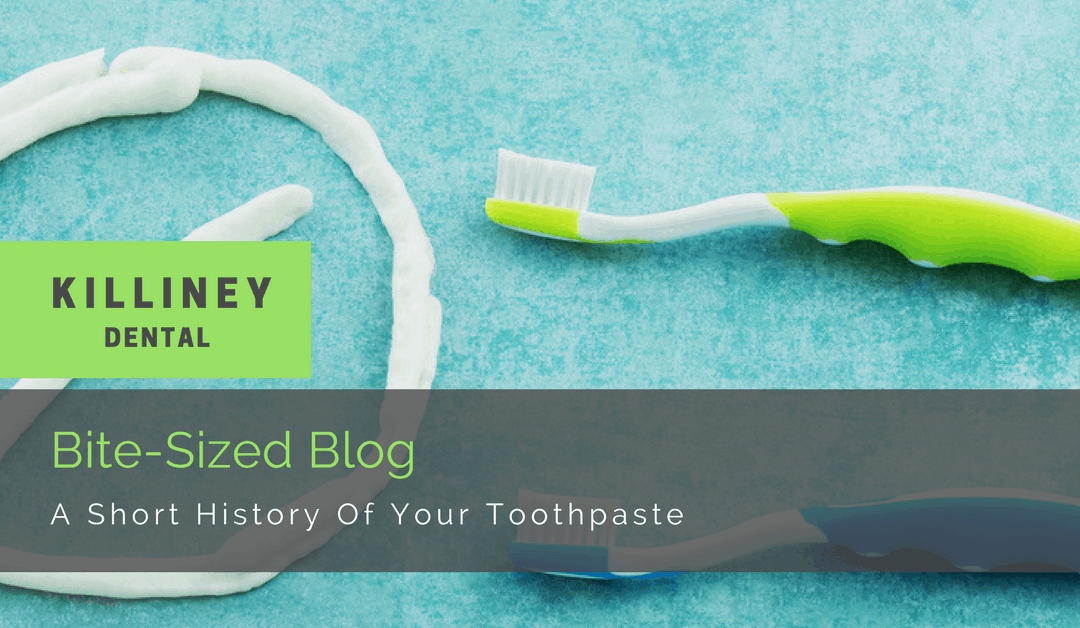A Short History Of Your Toothpaste
It is something that we use everyday, yet know little about. Billions of people around the world use toothpaste. Moreover, it seems we are not scared to drop a little money on it either. Toothpaste has worldwide sales of almost €13 billion euros every year.
However, it should not be surprising, concoctions to clean our teeth have been around since the ancient times. People from civilisations around the world have been using mixtures of all kinds of ingredients, trying to find a way to keep their teeth clean and pearly white.
The recurring theme through history is people wanted to take care of their teeth, and they learned abrasives were the best tool for removing plaque.
Ancient Africans, Egyptians, And Greeks
It is believed the ancient Egyptians began the practice of using cleaner just for their teeth. They mixed pumice stone and vinegar and put it on their teeth. Ancient Greeks also used mixtures of abrasives (usually ground up stone or bone) and liquids to clean their teeth.
In North America, Native Americans used clusters of pine needles to brush their teeth. In other cultures, people would use a twig brushed against their teeth and also used as a toothpick.
In Sudan, the natives used a weed called Purple Nutsedge. Anthropologists tested the plant and learned it contains a bacteria that helps prevent tooth decay. The plant has a bitter taste, and it has been reported it is almost inedible.
Medieval Times
Toothpaste in the Medieval times consisted of abrasives, spices, scented herbs. The mixtures were applied using rough cloth. Some of the abrasives used in the blends were:
. Salt
. Chalk
. Crushed sea shells, especially oysters
. Crushed bones
. Burned eggshells
. Burnt bread
Tooth decay was not common because sugar was not a significant part of the diet. Sugar was rare at the time, and it was used more as a spice than as a sweetener.
There were also mouthwashes made back then, and they were usually made from wine, beer or vinegar and spices were steeped in them. Mint was a regular ingredient in the recipes.
The big changes for toothpaste did not come around until the mid-1800s. William Colgate began his soap and candle making business in New York City in 1806. At the time, toothpaste was treated like soap for teeth, so it was only natural a soap maker would sell toothpaste.
So… How Did Toothpaste End Up In A Tube?
Dr. Washington Sheffield and his son Lucius Sheffield, both dentists in Connecticut, are credited with putting toothpaste into a tube. Toothpowders and toothpaste were packaged in jars. People shared toothpowder jars, dipping their toothbrushes into the same jar as everybody else. This practice was not a sanitary way to dispense toothpaste.
Lucius Sheffield went to Paris to study dental techniques and surgery. While there, he saw art students squeezing paint out of their paint tubes and realized that was a safer, more hygienic way to dispense the toothpaste. So, he and his father put their toothpaste into a tube. The idea caught on with other toothpaste makers, and soon it became the standard packaging.
Fluoride Arrives On The Scene
Since the 1890s fluoride had been an ingredient in some tooth powders and pastes. However, it was not until it was proven fluoride helps prevent cavities that it was regularly added to toothpaste. By the 1950s the American Dental Association only approved toothpaste containing fluoride.
Today, dentists around the world say fluoride is one of the best forms of defence against tooth decay. For the past 70 years, there have been thousands of studies done around the world that proved the efficacy of fluoride.
Now you have more understanding of all those years of brushing your teeth, and why your dentist is so adamant about brushing. Now, go forth and win a game of trivia!
Author: Dr Gerald O’Connor BDS NUI (hons)
Dr Gerald O’Connor is the principal dentist and owner of Killiney Dental. Dr O’Connor graduated with an honours dental degree from University College Cork in 1998. He has since worked as a general dental surgeon in the UK and Ireland and has over 20 years experience in the dental field, with a particular interest in cosmetic and restorative dentistry. Dr O’Connor is an active member of the Irish Dental Association, sitting on its Quality Patient Safety Committee, and is a Irish Dental Council registered dentist.


